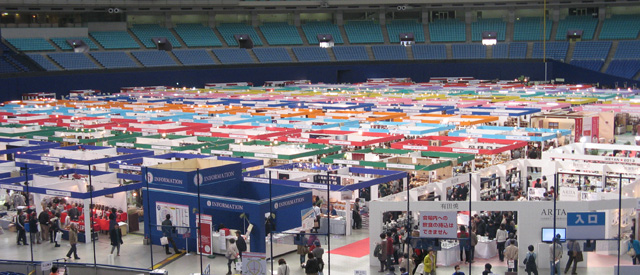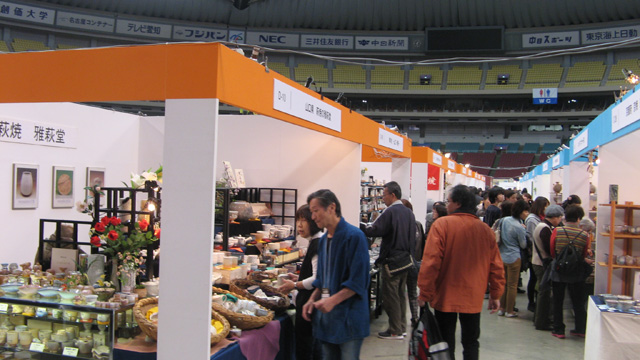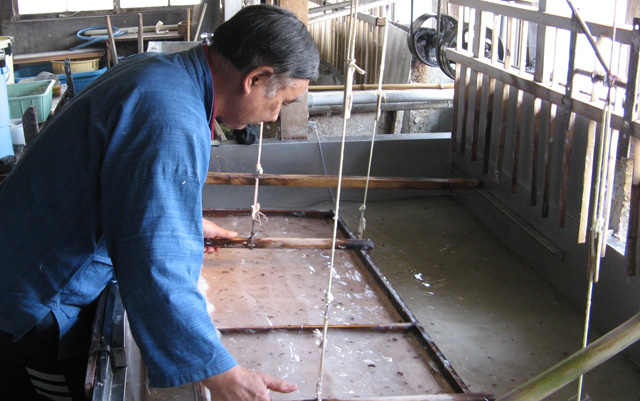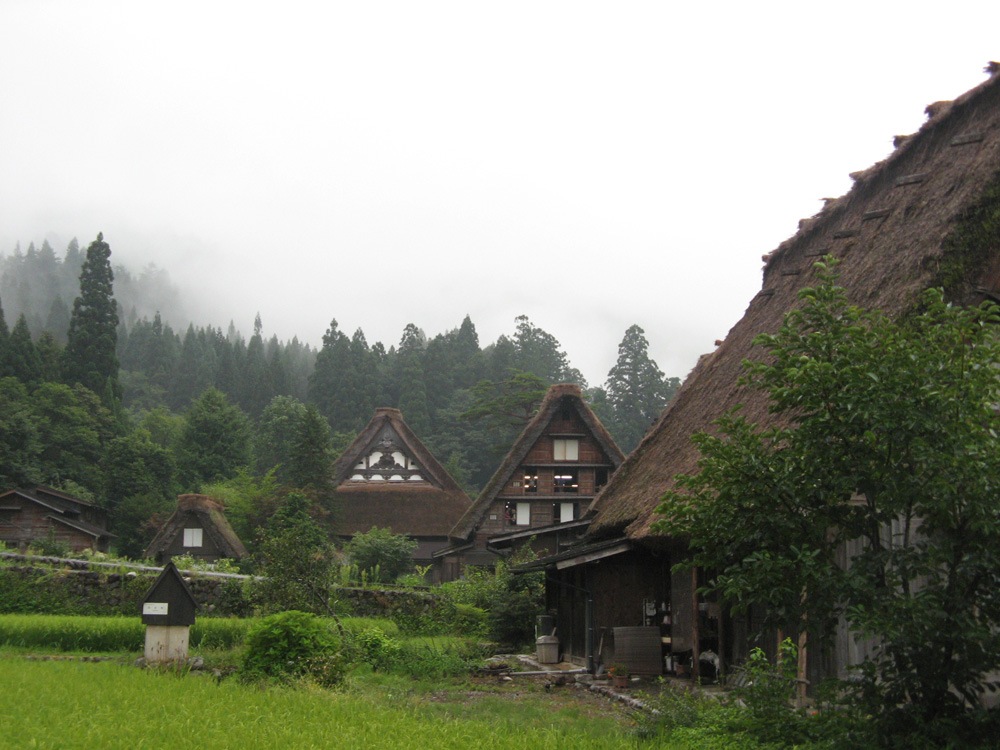

”Dome Yakimono (Ceramics) World” is one of the major national-wide ceramics exhibitions in Japan. We can enjoy a great variety of pottery and porcelain all over Japan at one location. As in Japan, there are countless local yakimono (ceramics) festivals from time to time, as matter of fact, the exhibitions are opportunity to see effectively many potters’ works and familiar potters. About 300 booths of individual potters and local guilds were there. The similar events will be held in Tokyo and in Fukuoka the early next year.
Other Mike’s Site Links
* Online Sake Cup Shop
* Amazon Store
* Twitter










